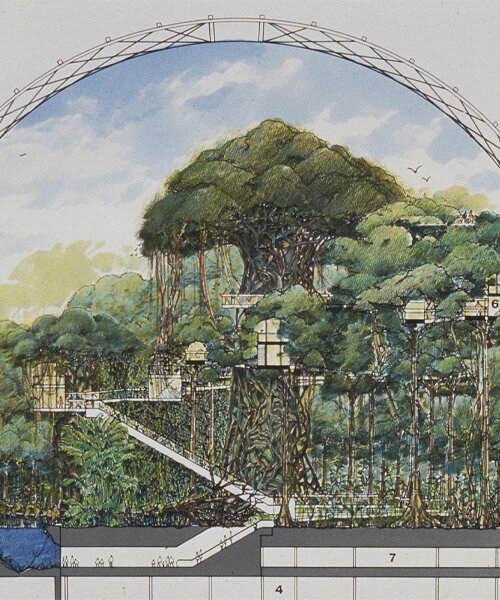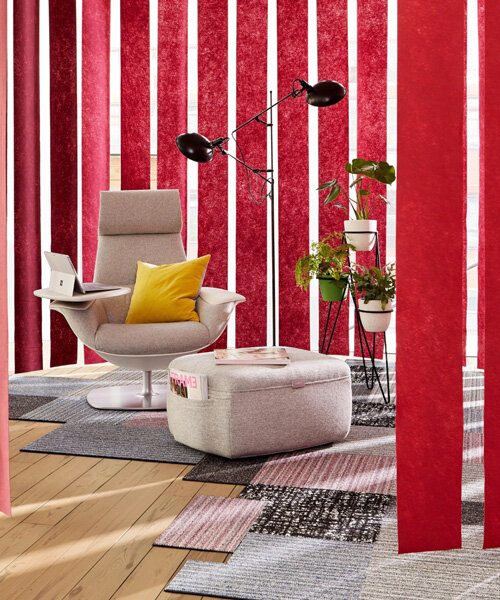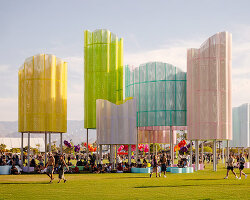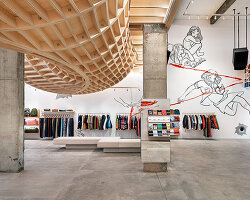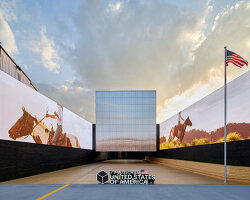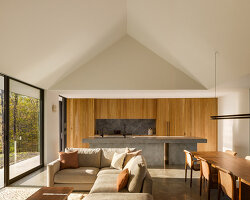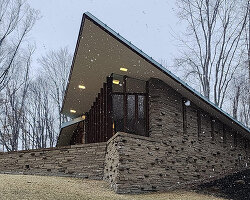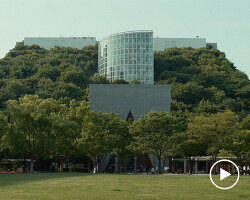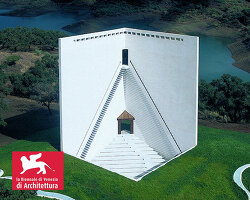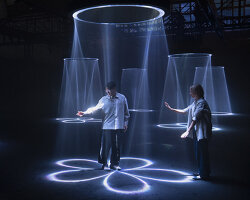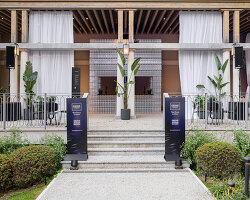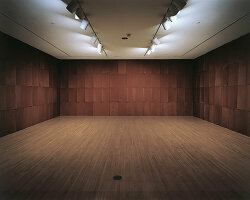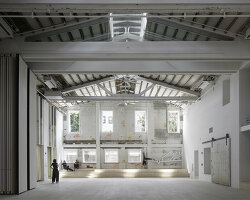emerging ecologies: Architecture & the Rise of Environmentalism
This coming fall, the Museum of Modern Art (MoMA) is launching Emerging Ecologies: Architecture and the Rise of Environmentalism — an exhibition dedicated to both realized and unrealized projects that address ecological and environmental concerns by architects who practiced in the United States from the 1930s through the 1990s. On view from September 17, 2023, to January 20, 2024, Emerging Ecologies is also the first exhibition created by the Emilio Ambasz Institute for the Joint Study of the Built and Natural Environment, born within MoMA in 2020. Following the pioneering Argentinian-American architect’s ‘green vision’ of the built environment, this institute seeks to promote a reconciliation between architecture and nature and an understanding of their interaction to stimulate the global debate on the urgent need for ecological recalibration.
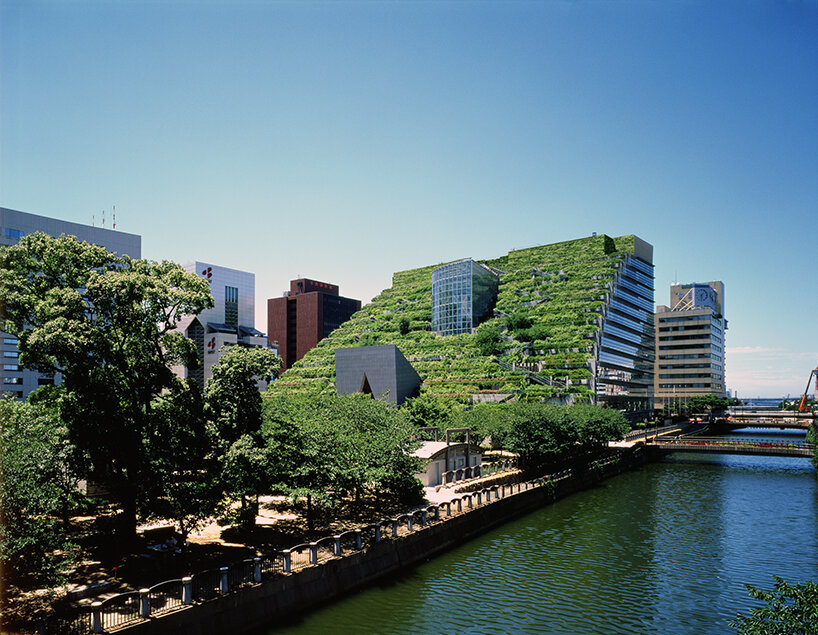
ACROS Center in Fukuoka | image © Hiromi Watanabe
examining 150 US-BASED works from the late 20th century
Emerging Ecologies at the MoMA will specifically spotlight 150 works to examine the relationship between architecture and the environmental movement in the United States from the late 20th century. According to the museum and the Emilio Ambasz Institute, these selected projects have either anticipated, inspired, challenged, or contributed to environmental and ecological issues within their context. Ultimately, ‘the exhibition, a one-of-a-kind retrospective of six decades of projects, looks to the past to suggest solutions for the future,’ writes MoMA.
Models, photographs, diagrams, sketches, and other archival materials, including posters, flyers, videos, and articles, will depict these innovative, daring, and even dystopian projects that have sometimes prefigured and inspired the rise of environmental awareness, anticipating themes such as pollution, the depletion of natural resources, the protection of biodiversity. Projects, again, that have denounced, investigated, and tried to resolve the relationship between the built environment and nature.
The wide range of works at MoMA collects interventions that celebrate the pioneers of environmental sustainability, including Frank Lloyd Wright, James Wines, Richard Buckminster Fuller, Beverly Willis, and Emilio Ambasz himself, who, in an ad hoc recording for Emerging Ecologies, together with other contemporary intellectuals and architects — Mae-ling Lokko, Jeanne Gang, Meredith Gaglio, Charlotte Malterre-Barthes, Amy Chester, Carolyn Dry — shares a series of thoughts on the relationship between man and nature, helping to consider how the works on display can facilitate to understand the role of architecture in mitigating climate change.
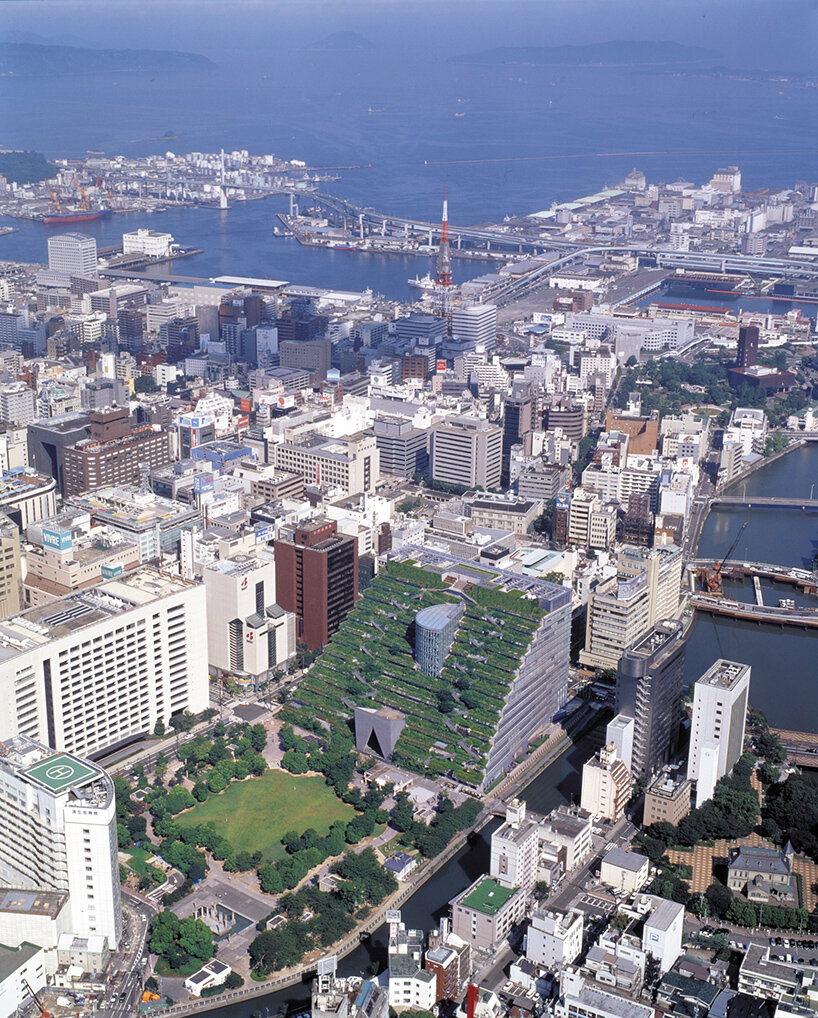
symbolizing architectural symbiosis with nature | image courtesy Emilio Ambasz & Associates
ACROS center by emilio ambasz: a green pyramid in fukuoka, japan
Ambasz’s iconic ACROS center in Fukuoka, Japan, is one of the many works that will take center stage at the MoMA this fall. Celebrating its 25th anniversary, this 100,000 sqm building emblematized, to this day, an architectural symbiosis with nature. Indeed, the project emphasizes the concept of ‘green over grey’ and returns the land it occupies to the community. It features 14 terraced gardens, pools, waterways, and a panoramic belvedere on the roof open to the public.
The building challenges the idea that cities are for buildings and suburbs are for parks, instead showing how urban centers can include green spaces and new constructions. Additionally, the ACROS center contributes to reducing heat island effects, energy consumption, and CO2 emissions. The interior encompasses multipurpose areas, including an exhibition hall, museum, theater, conference rooms, offices, and commercial spaces, making it a prominent landmark for residents and tourists alike. The ACROS center has influenced notable architects like Renzo Piano, Jean Nouvel, and Tadao Ando, who praised its environmental dimension.
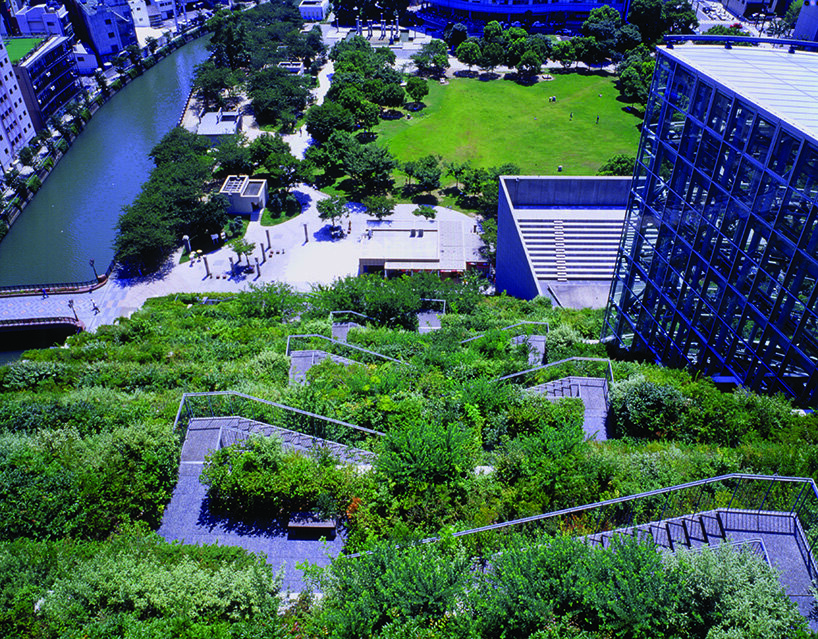
the 10,000 sqm center initially hosted 76 plant varieties | image courtesy Emilio Ambasz & Associates
A pioneer of green architecture since the 1970s, Emilio Ambasz, is still today a point of reference for his innovative thinking, bearer of a mending pact between nature and built. ‘Every building is an intrusion into the plant kingdom and is a challenge to nature: we must devise an architecture that stands as the embodiment of a reconciliatory pact between nature and construction, designing buildings so intrinsically connected to their surroundings that they are unable to disentangle themselves from each other,‘ reflects Emilio Ambasz. During its inauguration, the ACROS Center featured 76 different floral species and a remarkable count of 37,000 plants. Guided by the innate forces of biodiversity over time, the green pyramid now holds 120 plant varieties and a thriving population of 50,000 plants.
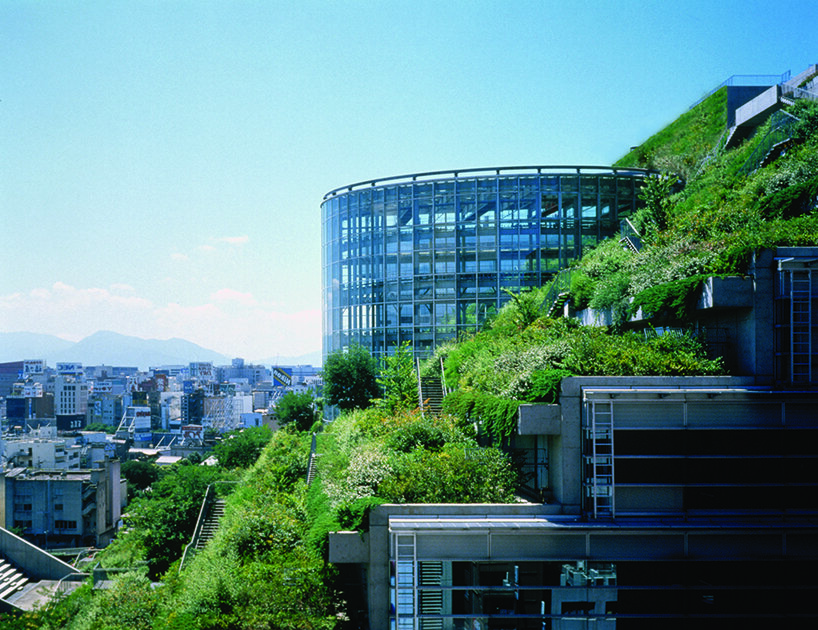
image courtesy Emilio Ambasz & Associates
Emilio Ambasz’s deep-rooted relationship with MoMA
Emilio Ambasz’s multifaceted and deep-rooted relationship with MoMA spans over five decades. As Curator of Design in the Museum’s Department of Architecture and Design from 1969 to 1976, he organized several groundbreaking exhibitions, including Italy: The New Domestic Landscape (1972); The Architecture of Luis Barragan (1974); and The Taxi Project: Realistic Solutions for Today (1976) and authored their accompanying publications. The industrial designer and architect is also represented through more than 20 works in the Museum’s Architecture & Design and Media & Performance Art Collections.
As the subject of Museum exhibitions, the architect was featured in Emilio Ambasz/Steven Holl: Architecture (1989) and In-Depth: The House of Spiritual Retreat by Emilio Ambasz (2005-2006), and his work has been included in several others, including The Changing of the Avant-Garde: Visionary Architectural Drawings from the Howard Gilman Collection (2002-2003) and 9 + 1 Ways of Being Political: 50 Years of Political Stances in Architecture and Urban Design (2012-2013).
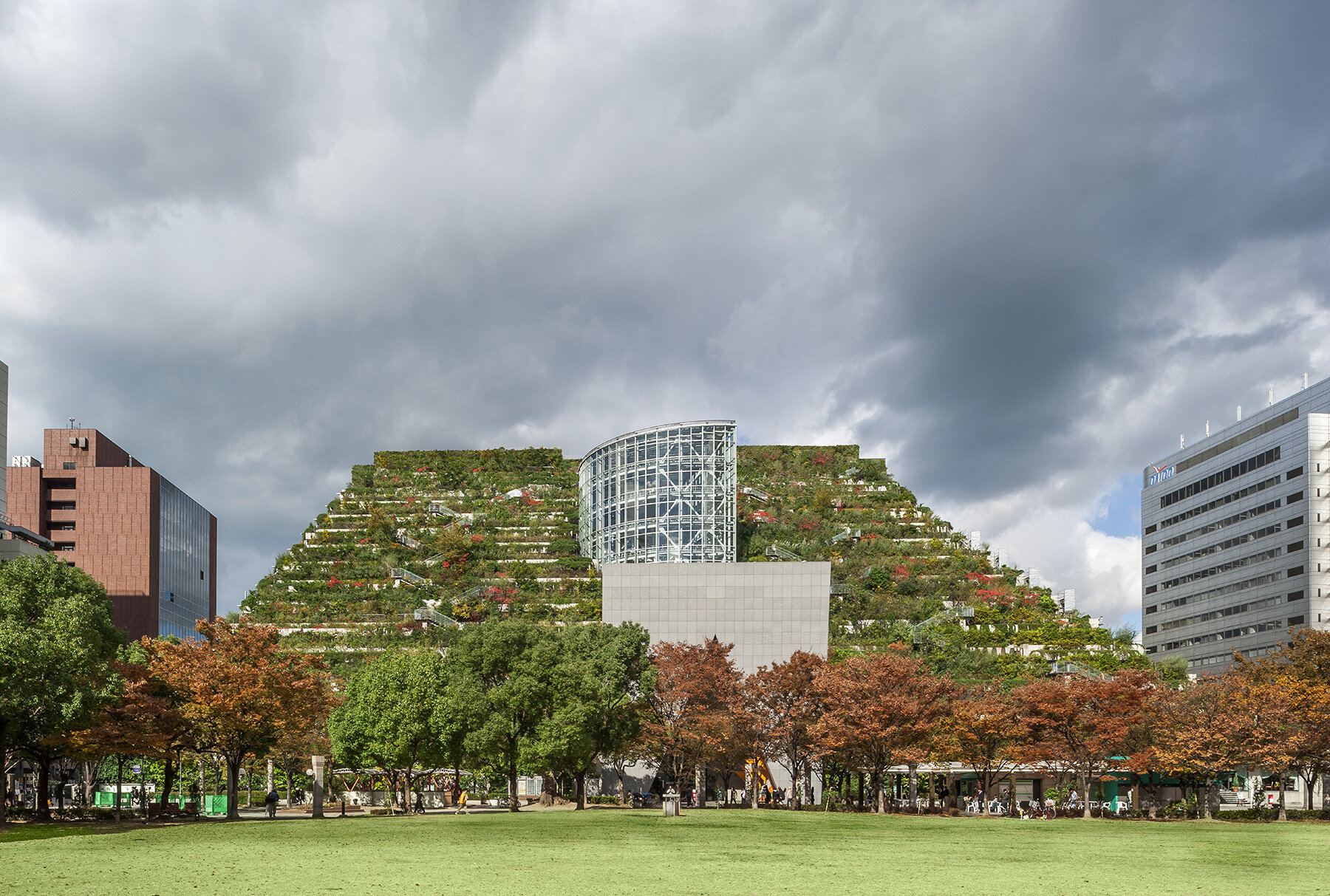
celebrating ACROS Center’s 25th anniversary | image courtesy Emilio Ambasz & Associates
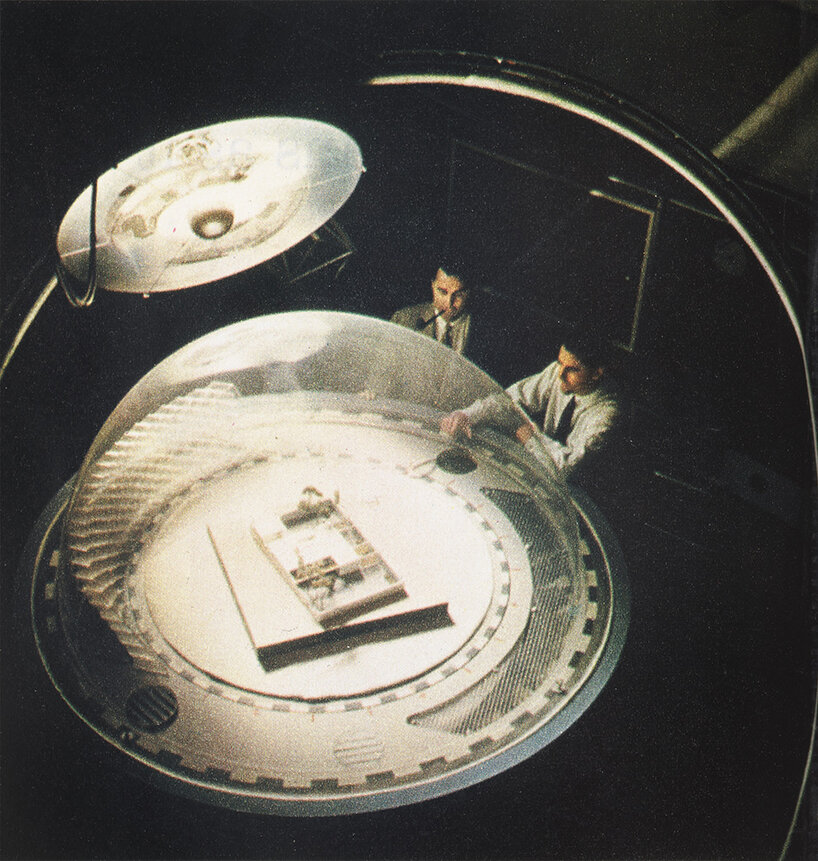
Aladar Olgyay (1910–1963) & Victor Olgyay (1910–1970), Thermoheliodon (1955–56) | the Olgyay brothers with their Thermoheliodon device at the Princeton Architectural Laboratory, Princeton, New Jersey, from Collier’s, October 26, 1956 | image © Guy Gillette
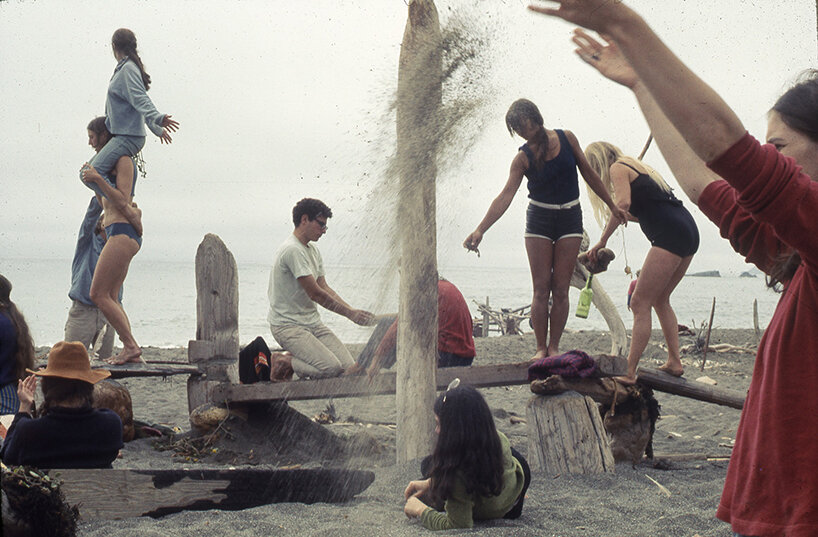
Anna Halprin (1920–2021) & Lawrence Halprin (1916–2009), Experiments in Environment Workshops (1966–71) | participants in the Sea Ranch Driftwood Village Rebuilt event, Sea Ranch, California (1968) | University of Pennsylvania, The Architectural Archives | © Lawrence Halprin Collection
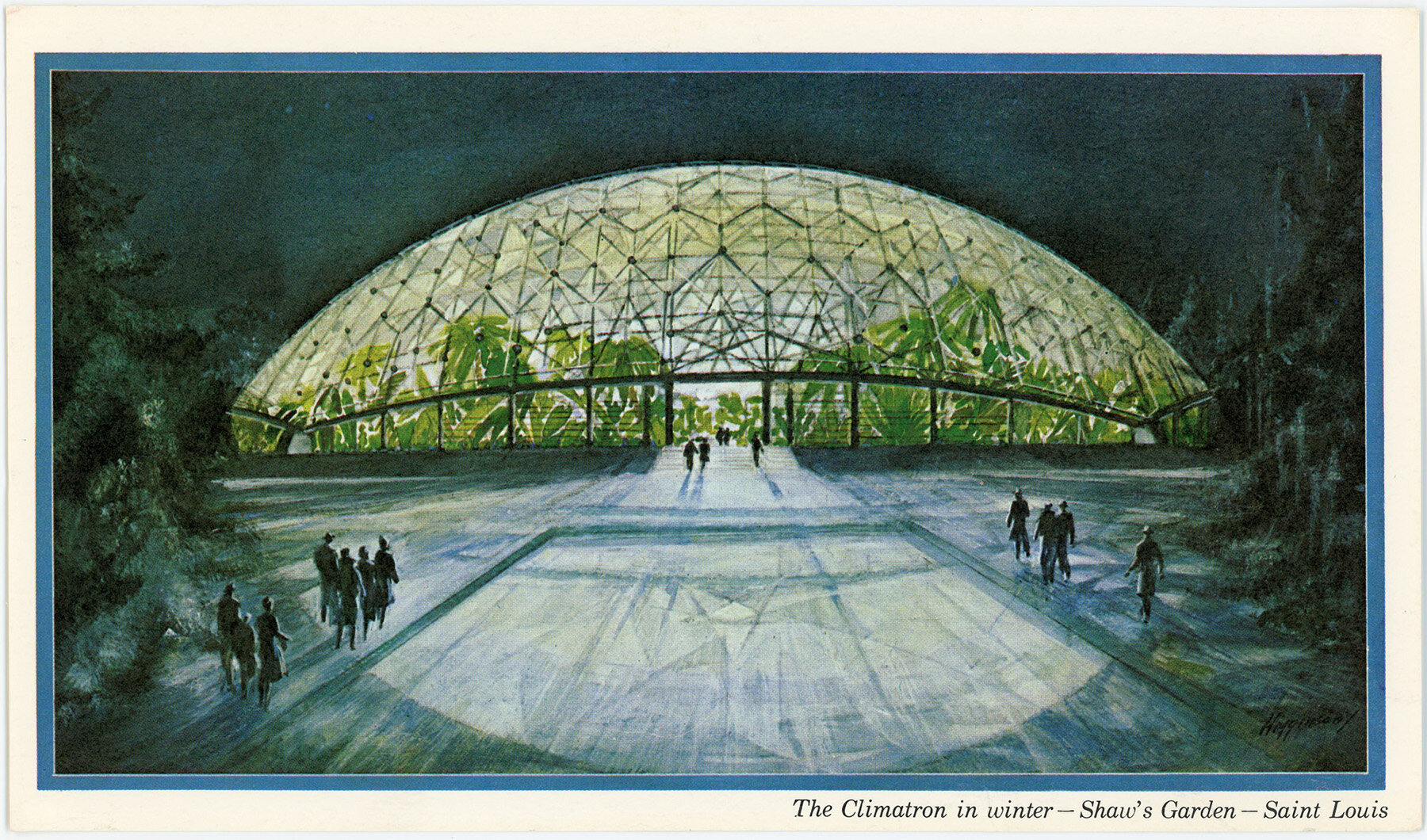
unknown artist, The Climatron in winter–Shaw’s Garden–Saint Louis (c. 1960) | postcard, 10.2 × 20.3 cm | © The Missouri Botanical Garden Archives
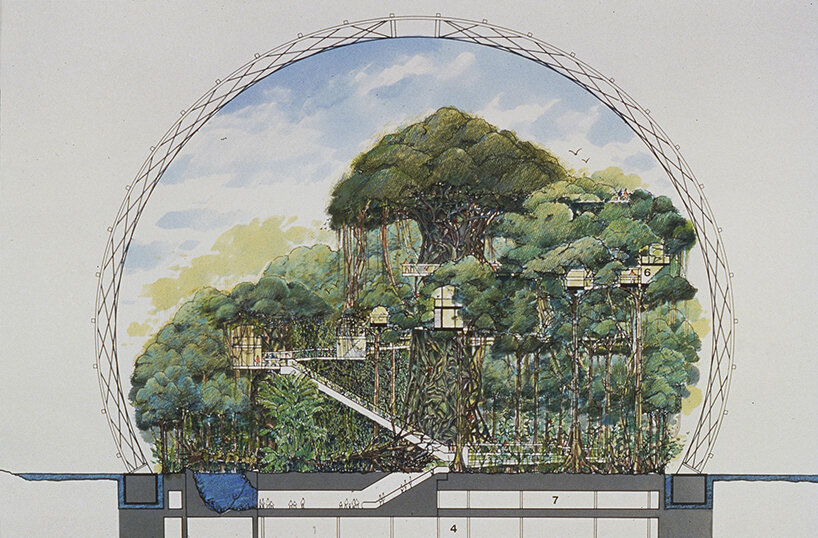
Cambridge Seven Associates (est. 1962), Tsuruhama Rain Forest Pavilion, Osaka, Japan (1993–95) | section drawing showing underground levels and paths at forest level (1994–95) | marker & prismacolor pencil on black-line diazo print, 50.8 × 76.2 cm | © Collection Cambridge Seven Associates
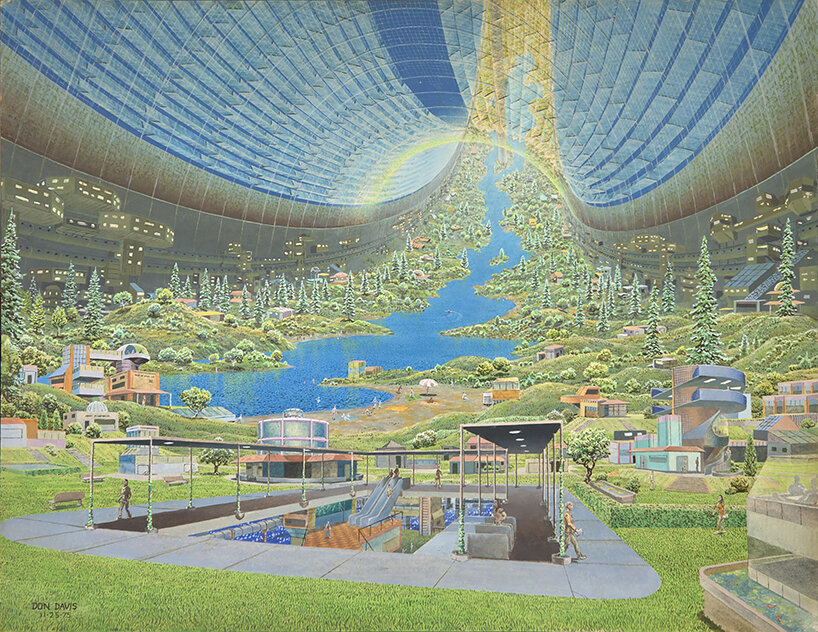
Don Davis, Stanford torus interior view (1975) | acrylic on board, 43.1 × 55.9 cm | commissioned by NASA for Richard D. Johnson & Charles Holbrow, eds., Space Settlements: A Design Study (Washington, DC: NASA Scientific and Technical Information Office, (1977), | illustration never used | © Collection Don Davis
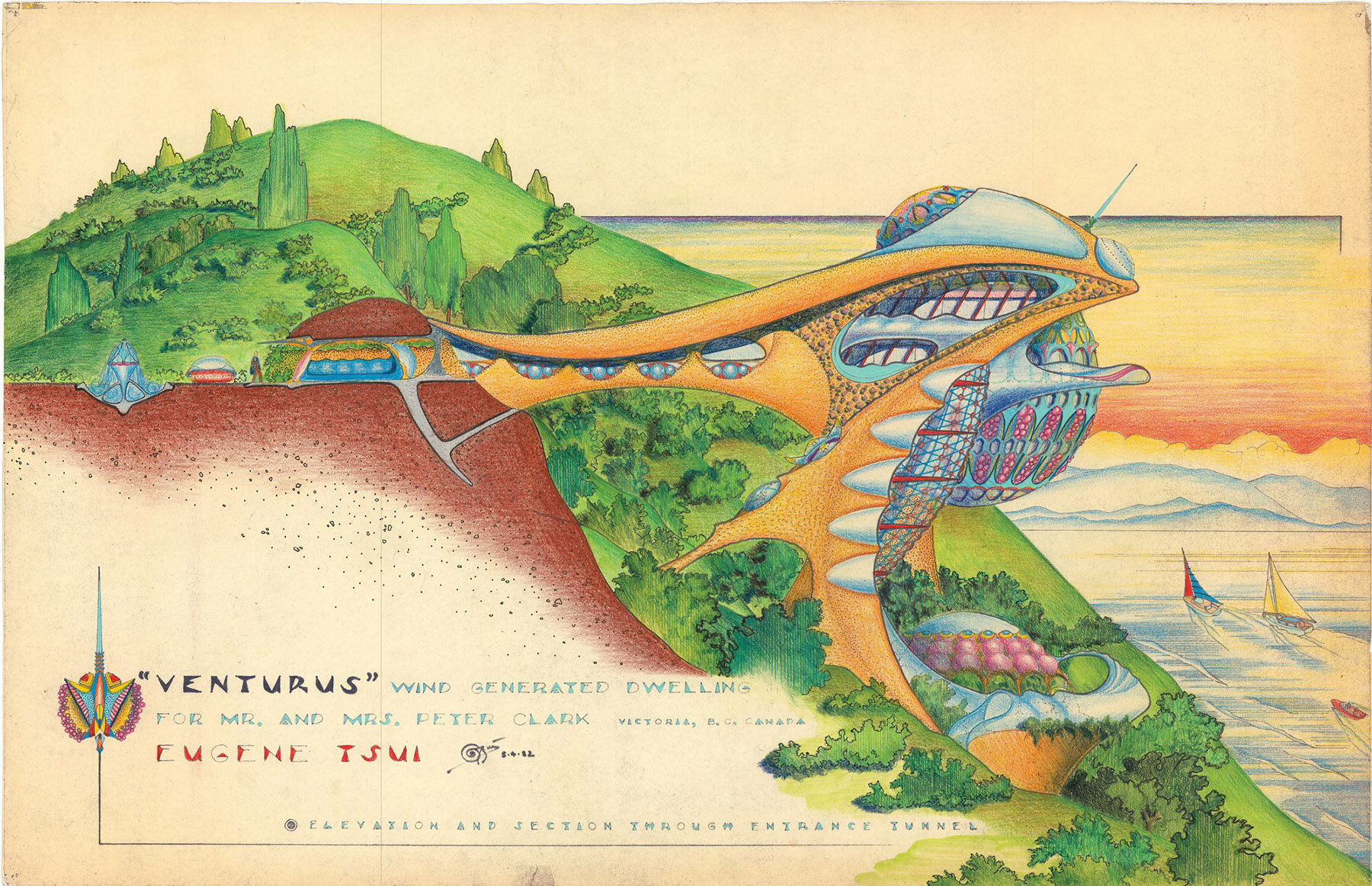
Eugene Tssui (1954) Venturus | wind-generated dwelling for Mr. and Mrs. Peter Cook, Victoria, BC, Canada (1982) | elevation and section through entrance tunnel | watercolor, prismacolor pencil, pastel chalk, and colored ink on paper, 53.3 × 81.3 cm | © Collection Eugene Tssui
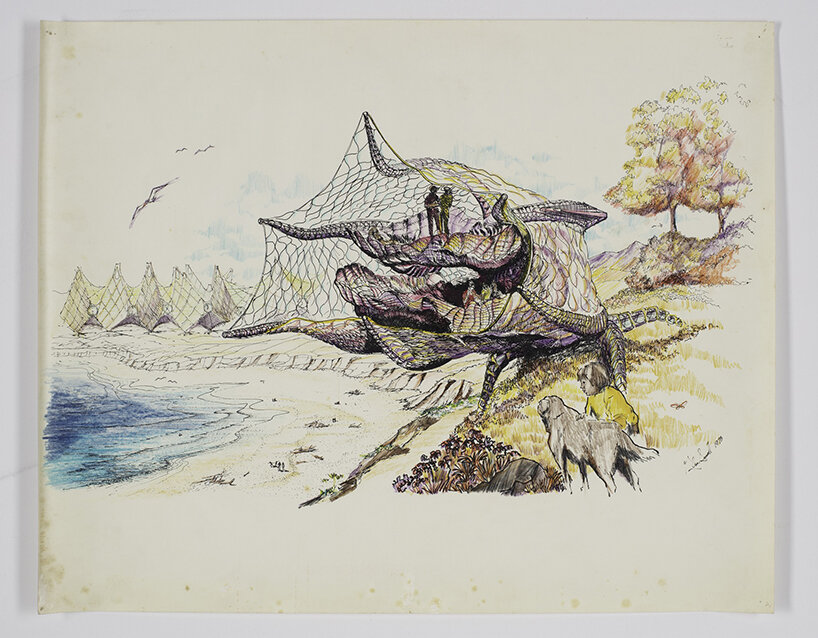
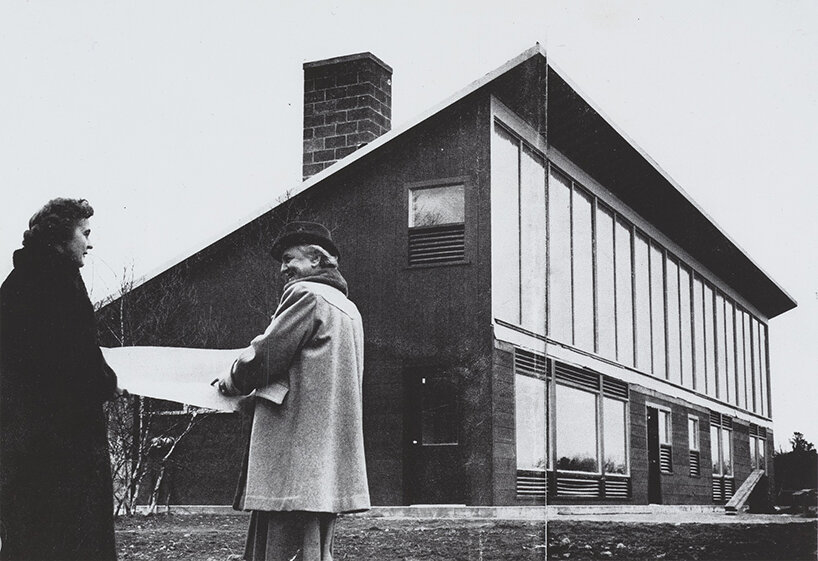
exhibition info:
name: Emerging Ecologies: Architecture and the Rise of Environmentalism
location: Museum of Modern Art (MoMA) | @themuseumofmodernart, New York
organized by: Emilio Ambasz Institute
viewing dates: September 17, 2023 to January 20, 2024
